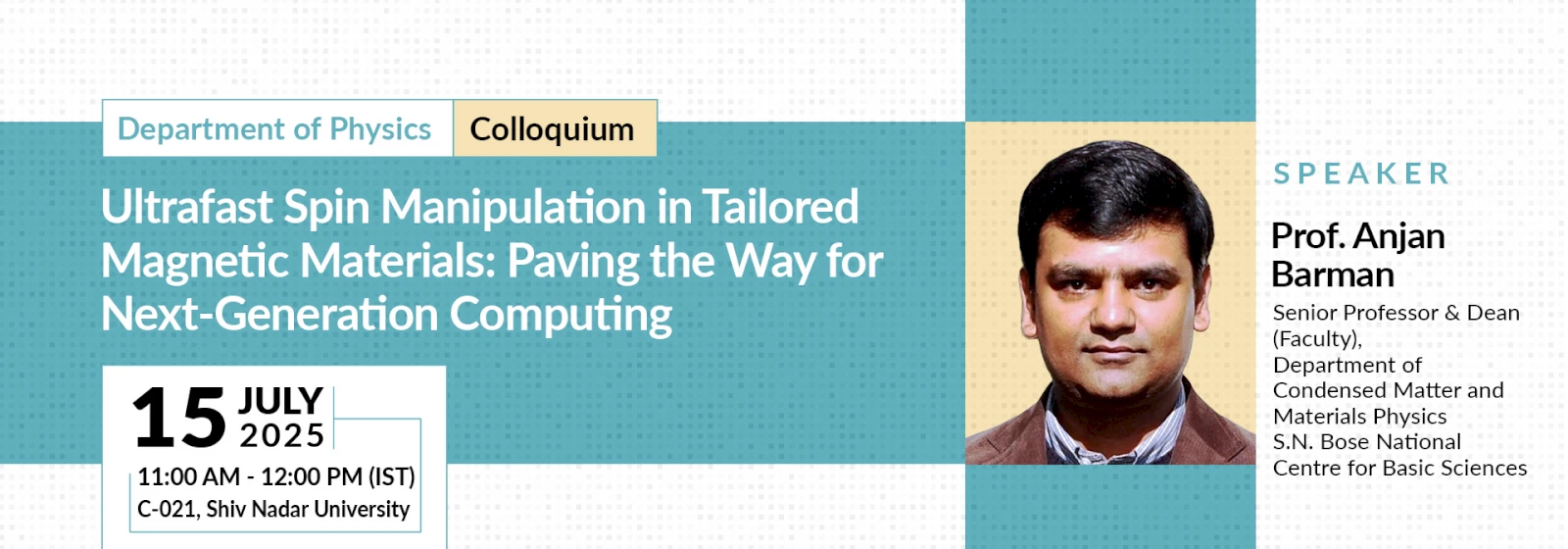Ultrafast Spin Manipulation in Tailored Magnetic Materials: Paving the Way for Next-Generation Computing
Abstract:
Spintronics and Magnonics are rapidly emerging fields with myriad applications in magnetic storage, memory, logic, sensors, microwave sources, data communication and processing, as well as wave-based computing. For them to become viable and sustainable technology, it is imperative to study excitation, manipulation and detection of spin dynamics in artificially structured magnetic materials. Besides, novel effects such as spin-orbit effects, pure spin current transport, spin textures, hybrid Magnonics, and voltage-controlled magnetism have strongly impacted a rich variety of phenomena occurring over a wide range of time and length scales.
Here, we will discuss ultrafast demagnetisation, remagnetisation, transient magnetic enhancement (TME), precession, Gilbert damping and spin waves in different ferromagnetic thin films, heterostructures, nanostructures and spin textures. The role of spin-flip scattering and spin/thermal transport in ultrafast demagnetisation and TME will be discussed [1-2]. Investigation of spin Hall effect [3-4] and spin pumping effect [5-6] in ferromagnet(FM)/nonmagnet (NM) or 2D materials systems by a novel all-optical measurement of modulation of damping and the role of spin mixing conductance, interfacial spin transparency, spin-diffusion length and two-magnon scattering will be conferred. Interfacial Dzyaloshinskii-Moriya interaction is cardinal in stabilising chiral spin textures in FM/NM heterostructures, and we will demonstrate its precise detection and quantification using asymmetric spin-wave dispersion in Brillouin light scattering experiment and probing of its microscopic origin by first principles calculations [7-9]. Finally, we will discuss an emergent phenomenon in reconfigurable and hybrid Magnonics: voltage-controlled on-demand Magnonics [10].
References
- S. Pan et al. Phys. Rev. B 98, 214436 (2018); 2. A. K. Mondal et al. ACS Nano 18, 16914 (2024); 3. A. Ganguly et al. Appl. Phys. Lett. 105, 112409 (2014); 4. S. Mondal et al., Phys. Rev. B 96, 054414 (2017); 5. S. Panda et al. Sci. Adv. 5, eeav7200 (2019); 6. S. Panda et al., Nanoscale 13, 13709 (2021); 7. A. K. Chaurasiya et al. Phys. Rev. Applied 9, 014008 (2018); 8. A. K. Chaurasiya et al. Phys. Rev. B 99, 035402 (2019); 9. S. Pal et al. ACS Nanohttps://doi.org/10.1021/acsnano.4c17187(2025); 10. S. Choudhury et al. Sci. Adv. 6, eaba5457 (2020).
All are cordially invited.

Share this: